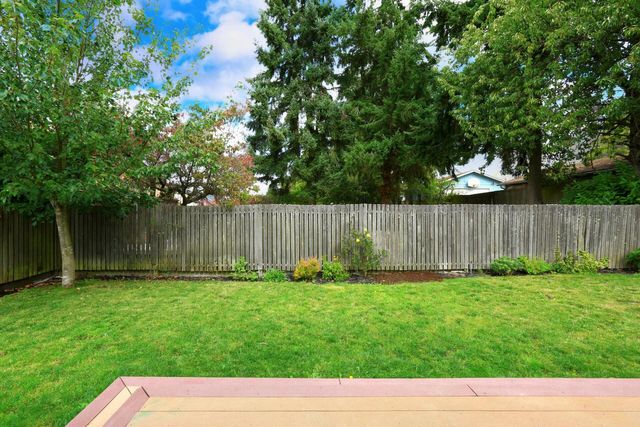
There are several factors that influence the price of vinyl fence installation. The first is the type of fencing material. Vinyl fences are very eco-friendly. However, many homeowners are not aware of the fact that some types of vinyl fencing require more materials than labor. This can lead to a much higher price than you would expect. It is important to know the total cost of your project before you commit to a certain type of vinyl fence.
Before you can determine the cost of installing vinyl fencing, it is important to first identify the style of your property. Solid black is expensive, but wood grain color is affordable for most homeowners. The price range for wood grain colors is around $40 per linear foot. Other colors are priced between $30-60 per linear foot. After you have decided on the style you want, you can calculate how much it will cost to install a vinyl fence.

Depending on which type of fence is desired, it may be less expensive to install a basic privacy fence or privacy panel yourself. DIY installations can be dangerous and may not be insured. It is possible to make costly mistakes if you do make one. A six-foot fence with vinyl fencing costs $3702 on average. It depends on the type and design of your fence. The cost of a wood grain vinyl fence is $35 to 45 per foot. Black vinyl fences may be more expensive at $60 per linear foot.
Installation of vinyl fencing is possible without the need to obtain permits. Costs for vinyl fence installation depend on the complexity of your project and the location where it will be installed. For fencing less than seven feet high, a permit is required. The cost can range from $200 to $400. If you have a difficult location or soil, you'll need to pay a separate permit for a higher-rise fence.
The cost per linear foot depends on the type and style of vinyl fence. The average fence will cost between $5 and $35 per foot. The length, height and number of posts will also affect the labor and material costs. A vinyl fence costs between $15 and $40 per foot on average. This includes materials and labor as well as removal.

In addition to the base cost of vinyl fence installation, you'll need to add the extras such as UV inhibitors and impact modifiers to enhance the look and durability of your new fence. The basic white fence can be customized with garden decorations, flowers or artwork. The total cost for this project will depend on the size and complexity of the project. After the job is complete, you'll need decorative elements like lights and signs.
FAQ
Do I need permits to renovate my house?
Yes, you will need permits before starting any home improvement project. In most cases, you will need a building permit and a plumbing permit. A zoning permit is also required depending on the type and extent of work you are performing.
Do I need an architect/builder?
It may be simpler to hire someone to help you renovate your home. If you're looking to purchase a home, an architect or builder can help you achieve your goals.
Can I remodel my whole house by myself?
Why pay someone to do it for you when you can do it yourself?
You may love DIY but there will come a time when you can't do it all by yourself. You may not be able to control all the variables.
For example, if you live in an old home, you might find that the wiring is outdated and you would need to hire a qualified electrician to make sure that your electrical system is safe and reliable.
Consider that you may not be able repair any structural damage that might have occurred during the renovation.
Additionally, you may not have the right tools to complete the job. You will need a special tool called the plumber's snake to clean clogged pipes if you plan to install a kitchen sink.
You must also follow plumbing codes to ensure that a licensed plumber is working on your project.
You need to be able to do the job before you take on any large tasks.
If you are unsure if it is possible to do the job on your own, ask friends or family members who have worked on similar projects.
They can help you determine the right steps and where you can find out more.
You can live in a house while it is being renovated.
Yes, I am able to live in a house and renovate it.
You can live in a house that is being renovated while you are renovating it. The answer depends on how long the construction work takes. If the renovation process lasts less than 2 months, then yes, you can live in your home while it's under construction. If the renovation takes longer than two weeks, however, you can't live in your home during the construction.
There are many reasons why you should not live at home during major construction projects. You might be hurt or even die from falling objects on the site. A lot of heavy machinery is used at the jobsite, which can lead to noise pollution and dust.
This is particularly true if you live on a multi-story home. In this case, the sound and vibration created by the construction workers might cause severe damage to your property and its contents.
You'll also need to cope with the inconvenience of living in temporary housing while your house is being renovated. This means that your home won't provide all the amenities you need.
As an example, your washer and dryer will be out of commission while they are being repaired. Additionally, the smell of paint fumes or other chemicals will be a constant annoyance as well as the banging sound made by workers.
All of these factors can create stress and anxiety for you and your loved ones. You should plan ahead to avoid feeling overwhelmed by this situation.
It is important to research before you start renovating your house. This will help you avoid costly mistakes down the road.
Also, it is a good idea to get professional help from a reputable contractor in order for everything to go smoothly.
Statistics
- Most lenders will lend you up to 75% or 80% of the appraised value of your home, but some will go higher. (kiplinger.com)
- They'll usually lend up to 90% of your home's "as-completed" value, but no more than $424,100 in most locales or $636,150 in high-cost areas. (kiplinger.com)
- According to the National Association of the Remodeling Industry's 2019 remodeling impact report , realtors estimate that homeowners can recover 59% of the cost of a complete kitchen renovation if they sell their home. (bhg.com)
- Rather, allot 10% to 15% for a contingency fund to pay for unexpected construction issues. (kiplinger.com)
- ‘The potential added value of a loft conversion, which could create an extra bedroom and ensuite, could be as much as 20 per cent and 15 per cent for a garage conversion.' (realhomes.com)
External Links
How To
How to Renovate an Old House
Let's start by deciding what type of renovations you would like to undertake. This could range from simple updates to your kitchen appliances, to completely changing the look of the entire house.
Once you've decided on the type of renovation that you want to do, it is time to consider how much money your budget allows you to spend. You might discover that you don't have enough funds for the entire project. If this is true, you will need to make hard decisions about which areas you can afford to fix and which ones you won't.
You need to be sure that before you do any renovations you are aware of the following things. The first thing to do is ensure you get the necessary permits. Also, check to see if you need planning permission in order to do certain types work. To add extensions to your home or make other changes, you might need building consent.
It is a good idea to verify with the local council before you begin work on your house. You should also check whether you require planning permission for any part of the house you plan to renovate. For major projects like a new roof installation, your insurance provider may need to be contacted to confirm that you have adequate coverage.
The next step after getting all the permits you need is to choose the right tools and materials for the job. There are many different options available, so it's important to take your time to research them thoroughly. Paint, wallpaper paste, carpets and tiles are some of the most commonly used items in renovations.
Be sure to consider the product's quality when choosing these products. Quality products last longer than cheaper products and are less expensive. You should only buy what you need when purchasing anything. It's important to not buy too much. You could waste valuable resources and end up with a lot of wasted material. Try to only buy what you actually need.
Once you've decided on the materials you want to use, you must plan where you'll keep them while you are working on the property. Renting storage space might be necessary if you plan on renovating a large part of your home. This will allow you to store all your supplies until you have them ready to go. Another option is to ask friends and family to help you move the items.